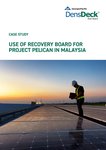Data centers are heavy electricity consumers, using an estimated one percent of energy produced globally, and 2.7 percent in Europe. This is expected to rise to 3.2 percent by 2030, thanks in part to a new generation of highly efficient and high-performing servers and the growing use of AI. As a result, the industry is falling under growing scrutiny as governments look for ways to reduce carbon emissions to help meet their net zero carbon commitments.
So, installing photovoltaic (PV) panels on data center flat roofs can help reduce energy expenditure, and that makes commercial sense. It reduces running costs and reliance on the local electricity supply, which is not always decarbonized while boosting sustainability.
Renewable energy can also provide a practical way to reduce the use of diesel generator back-up thanks to batteries that store the energy from PV panels.
Currently, incorporating renewable energy technologies is voluntary, but as we move closer to the binding carbon emissions target dates, it’s likely that the use of PV panels will become a regulatory requirement in Europe and globally.
Of course, integrating renewables brings challenges within roof build-ups. Most building designers are familiar with the need to increase the load-bearing capacity and durability of the roof to withstand both the weight of the panels and the additional maintenance traffic.
But there’s another risk that is starting to hit the headlines – one that increases insurance premiums because of the catastrophic consequences it can have on data centers’ operations: Fire.
What’s the risk?
The analysis put the annual fire incident rate at 28.9 fires per GW of PV panel generation capacity. As an estimate, this could result in 150 rooftop fires caused by PV panels in the UK in 2024. A worldwide figure that statistically could grow to up to two million fires by 2050 if projected PV panel growth rates are realized.
The damage and disruption caused by fire can be lengthy and expensive. This is especially true for mission-critical buildings such as data centers, that provide services 24/7, 365 days a year. In 2023, 70 percent of data center downtime incidents cost USD 100,000 or more, with 25 percent costing over USD 1 million.
There are two key areas of concern raised by insurers about the increased risk of fire due to PV panels installed on a commercial roof – the source of ignition and the increased fire load.
The main potential ignition source from rooftop PV panels comes from electrical failure. This causes high-voltage electrical arcing that can cause surrounding materials, such as the waterproof layer, to ignite.
Fire load refers to the quantity of combustible materials that can fuel a fire once it has ignited. For PV panel roofs it includes the flammability of the PV equipment and the surrounding materials in the roof assembly.
Although, another consideration is how the PV panels will affect the behavior, acceleration, and penetration of fire. Their height and angle can affect how quickly the fire spreads, whether hot spots develop, and how easy it is to extinguish flames.
How can you reduce fire risk?
The initial aim should be reducing the possibility of electrical faults. Always select a tried and tested PV system and ensure it’s installed by trained professionals. Best practices to limit fire spread, such as correct separation distances between PV arrays and panels, should also be followed. Regular maintenance and repair should be scheduled and undertaken regularly to ensure components work correctly.
Secondly, take steps to mitigate the risk of damage if a fire does occur.
A fire that penetrates the roof will be significantly more expensive in terms of lost assets and disruption than one that is extinguished or successfully contained within a small area on the rooftop. It’s for this reason that insurers FM Global believe the majority of loss is preventable and AXA states ‘Do not install PV systems on combustible roofs.’
So, when adding PV panels to the roof, it’s important data centers can demonstrate they have chosen a roof that will limit fire spread and penetration.
How do you limit fire damage?
Commercial flat roof build-ups comprise a variety of components including the roof deck, the insulation layer, and waterproofing. The roof performance will be affected by the design as well quality and robustness of each component, the fixing methods deployed, and, where adhesives are used, material compatibility.
However, there’s another key component that should be used for rooftops with PV panels – a fire performance cover board.
Cover boards, such as the DensDeck roof board, are installed above the insulation layer and below the waterproof membrane. They feature a gypsum core and are non-combustible with Euroclass A1 reaction to fire classification. As a result, they can offer a multitude of performance benefits for a flat roof build-up, including improved fire performance.
If a fire starts on the outside of the roof, the presence of a roof cover board can help to reduce the rate of fire spread across the surface of the waterproofing layer. It can also help increase the fire resistance of the roof build-up, potentially slowing down the rate of fire penetration into the building below. As a result, installing a cover board within the roof build-up can help increase the amount of time available to extinguish a fire, limiting the likely damage and financial loss to a business.
For this reason, commercial flat roof specifiers should look for cover boards that are manufactured from non-combustible materials such as gypsum with a Euroclass A1 reaction to fire classification. This demonstrates the materials will not fuel a fire and will, in fact, help to slow down its spread.
For extra assurance of quality and performance, they can also choose roof assemblies that are ‘FM Approved’ by the testing arm of FM Global, now known as FM, many of which include roof cover boards to help increase their fire-resistant properties, making them ideal for use with PV panels.
As well as helping to mitigate the effect of fire from PV panels, roof cover boards can also improve acoustic performance, provide additional dimensional stability to the roof system, and improve the resiliency of the waterproofing membrane against damage, whether it’s caused by weather such as hail or wind, or by maintenance traffic and accidentally dropped tools.
For data centers to truly capitalize on the benefits of PV panels, it’s important they also understand the risks, particularly around fire, because the consequences of failing to do so could be catastrophic.
The good news is that mitigating the risks that PV panel installation introduces to a roof build-up and meeting the needs of insurers can be relatively simple. Always choose a tried and tested PV solution, install and maintain it in line with the manufacturer's guidelines, and incorporate a non-combustible roof cover board to increase the fire resiliency of the roof.
More from Georgia Pacific
-

Use of recovery board for Project Pelican in Malaysia
Case study on FM-approved DensDeck® Prime Roof Boards used in mission-critical buildings
in Malaysia
-

Sponsored Setting the standard: Fire resistant roofing for data centers
Exploring flat roof fire resilience for data centers and mission critical buildings
-

What are DensDeck roof boards?
An infographic exploring the benefits of DensDeck roof boards by Georgia Pacific

